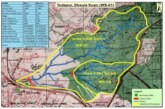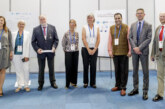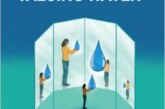1. Introduction:
We know that throughout the history the need for providing water supplies has been met by developing additional resources. Water conservation is defined to mean storage of surface flows in reservoirs. Of late the conservation has come to mean increasing the efficiency of water use. Better and effective water management including its practices is now possible through stretching already developed supplies.
The climate changes and present dry weather stresses the need for water conservation. The indiscriminate usage of surface and ground water determine the need for annual water auditing. Both, however, remind us that our resources are finite and that its wise use is essential.
Therefore as a policy, water resource should be managed in a manner that will result in the greatest long term benefit to people.
2. Industrial Water Uses:
It is rather difficult to imagine any industry in which water is not used. It is used for heating, cooling or as a part of manufacturing and cleaning process. Bulk processing industries need bulk supply of water, while specialized industries such as pharmaceuticals may need smaller but higher quality water. Water and pollution are two outputs of industry. Both effect lives and ecology of downstream communities.
Commonly water is raw material used in washing, cooling and processing and so on. The water use efficiency refers to practices, products or systems that use less water without sacrificing performance.
 The industrial water use includes water used in manufacture products, the water used as process and production water, air conditioning, boiler-feed, washing etc. The sources include withdrawals from ground water and surface water, wastewater treatment and recycling.
The industrial water use includes water used in manufacture products, the water used as process and production water, air conditioning, boiler-feed, washing etc. The sources include withdrawals from ground water and surface water, wastewater treatment and recycling.
The one of the major uses of water in industry is related to actual manufacturing process and end product. Water use is both consumptive and no-consumptive. The consumptive use includes water used to manufacture a product for instance in a water bottling plant and then distributed for consumption. It is non-consumptive such as water used in colouring fabrics in textile industry and then discharged to wastewater system. The proportion of water consumption may be 1.25% for sugar sector to as high as 87% for thermal power plants.
The annual wastewater discharge in industrial sector ranges from 150Mm3 for sugar producing sector to 27,000Mm3 for thermal power plants. Pulp and paper, steel, textile and engineering sectors are largest industrial wastewater discharge sectors next to thermal power plants.
- Common water uses in Industries:
Following are common uses in industry:- Washing or rinsing of raw material & final products
- Preparation of slurries
- Cleaning of equipments
- Removing of heat
- Irrigation of landscap
Water usage in various segments of a industry are given in table.
Table 1: Water usages at various industriesTypes of Industries Segment water use (%) - Computer & Electronic Manufacturers
Rinsing takes 40% water - Food processes
Washing & sanitation consume 42% of water - At offices
Restrooms & domestic use 40% - Motels & Hotels
Laundry & guest room together consume 50% - Benefits of improving water use efficiency:These include:
- Lower water bills
- Reduced waste water charges
- Lower energy cost, and
- Reduced cost for chemicals and water purification
3. Water Management in Industries:
Broad Element of Water Management:
Water resources already explored and developed may be sued to the maximum extent before new sources are developed. Besides this,
- Alternative sources of supply shall be found.
- Optimum application techniques and processes for water conservation shall be implemented and waste shall be avoided.
- Water quality shall be protected and ecosystem preserved.
Water Management however, is to be based on existing rules and guidelines and by using new rules where existing one’s are inadequate.
4. Water Auditing And Conservation:
Briefly the role of water auditing and water conservation is described.
- Why carry out “Water Auditing”
- To find out status of water source(s) & its use.
- To yield information on pattern of use
- Social environmental issues affecting access to water
- To identify opportunities for water saving for making equitable use.
- To check accuracy of available status of water and its quality & validity
- To check spatial and temporal scale at which data is utilized.
- Methodology Steps
- Basic Data Collection
- Analysis of current water use
- Detection of potential leaks in water system
- Determining opportunities for reducing water use
- Detailed Water Audit
- Determining detailed water balance
- Outline procedure to maximize water savings
- Follow Rules of 3 R’s
- Reduce
- Recycle and
- Reuse
- Install water saving technologies & process
- Undertake continued assessment on annual basis
- Basic Data Collection
- Water Auditing Methods
- Water audit kits
- Water meter reading
- Comparing water metering with water bill
- Using water pressure testing devices
- Using water flow rate testing devices
Basically water auditing is an exercise to locate, analyze and quantify each water demand and supply facilities.
- Queries for water using processes in Industry:
A checklist is as follows:- How much water is entering processes area
- The quality of water at entery point
- Cost of bringing water to process area
- How much water is incorporated in final product and how much rejected with effluent stream.
- What are water losses to soil and air
- What are characteristics of effluent streams
- What is cost of managing effluents.
- A Self Audit Format
- Obtain a site plan / water plan & breakdown of sites
- Mark all water using entities on map.
- Set up water sub-meters if site is bigger.
- Review water bills of last one year & plot water use to understand water use trend of the site. Establish a baseline for use in future comparisons (last 12 months water use date)
- Check for water meters of number of consecutives days, and read meters of atleast two weeks,
- before work begins in morning
- again after work is shut down in evening
- difference between two readings is the daily water use of a site under audit.
Detailed monitoring install data loggers to electronically read water use.
5. Case Examples And Procedures for Water Auditing
Institutional Areas:
- Use walk through procedure
- Create inventory of items that use water
- Draw graph of water bill vs annual consumption
- Locate water meters for checking data for sufficient period of record at least for 2 weeks and check morning/ evening water meter readings
- Study graph results for (ii) & (iii) above
- List out enumeration of water using entities
- Hand wash Basin
- Cistern/toilets
- Urinals
- Showers
- Bubblers
- Sprinklers
- Water Pools
- Locate above (v) also on a suitable scale map
- Determine daily / weekly water use for lawns/ gardens
- Examine water consumption by plants types
Hospital Case:
- Hospital in big cities are largest water users
- For example at a Hospital on a given day upto 500 people may be working and 150 patient are treated.
- Using practice of data logging and data processing daily and hourly usage is determined at site of utilities
- It would be seen that water consumption was taking place by night though site activities were not occurring
- Daily water usage equivalent to water losses of 50 KLD water if detected would represent an annual saving of 77500 KLD .
- Total Water Intake (MG/yr)
- Total water consumption (MG/yr)
- Annual cost of water ( Rs. )
- Use in cooling compressors – (percentage say 65%)
- Cooling of steam condensation before disposal ( 5%)
- Process usage ( X ray developers, kitchen, labs) (15%)
- Sanitary and general cleanup (15%)
- Adopt conservation measure to reduce / save upon high water usage
- Control compressor cooling flow
- Use chilled water for compression
- Eliminate condensate cooling
- Add temperature control valves to compression cooling water discharge lines
Shopping Mall Case:
- These Cover Large area
- Major water uses may include
- Evaporative cooling towers
- Food preparation
- Public toilet flushing amenities
- Washing
- Water audit to enable possible causes of high water use & high consumption with hydraulic design engineers
- Faulty cooling towers & hot water system are possible feature of high water use
- Repairs to them can reduce water losses
6. Industrial water conservation practices:
Water users are divisible into two groups, the system users and operators.
The industries belong to system users group.
Industrial users apply a number of conservation and water use efficiency practices. Some of these are described below:
- Water Reuse and Recycling:
- Water Reuse: Water reuse is the use of reclaimed water from one application to another such as use of treated industrial waste water for landscape irrigation. Factors that should be considered for industrial water reuse include:
- Identifying water reuse opportunities
- determining minimum water quality need for a given use identified from (i) above
- identifying waste water sources that satisfy water quality requirements
- determining how water can be transported to identified new use area.
Reuse of waste water reduces demands on available freshwater from surface and ground water sources.
- Water Recycling: It is the reuse of water for same application for which it has originally used but require treatment before its reuse.
- Water Reuse: Water reuse is the use of reclaimed water from one application to another such as use of treated industrial waste water for landscape irrigation. Factors that should be considered for industrial water reuse include:
- Factors that should be considered in recycling:
- Evaluation of water quality degradation resulting from use
- Determining of treatment steps that may be required before preparing the water for recycling.
7. Conservation Approaches:
- Cooling water circulation: The use of water for cooling in industrial application is by far the largest water use in industry. Water is used to cool heat generating applications. The method lowers the temperature of a source and then discharges it. Recirculating cooling system reduces water use by using the same water for several cooling operations. The cooling water conservation approaches include evaporative cooling, ozonation and air heat exchange.
- Rinsing : A yet another common use of water in industry is application of deionised water for rinsing and cleansing in removing contaminants from products and equipments.
- Landscape irrigations: A yet one more way in which industries can minimize or reduce water use is through effective landscape irrigation with use of drip systems.
Common Approaches to water efficiency measures in industry:
These are given in table below:
Table 2: Water Efficiency Measures
| Approaches | Activity | Practices |
|
Minimizing water consumption |
|
|
Introducing resources conservation solutions in operation |
|
|
Making of modification in process / equipments |
|
|
Substituting technology option |
|
There is tremendous scope for saving water in industry. In our case a ton of steel needs approximately 20 to 65 m3 of water for its production as against Japan, USA, and Germany, where average is less than 6 m3. Similarly a ton of paper production requires 300-500 m3 of water twice as much as used in European countries.
Given below are likely percent water savings caused with use of various water efficiency measures:
Table 3: Industry water saving
| Efficiency Measures | Potential saving (%) |
|
Upto 90% |
|
60% |
|
15% |
|
20% |
|
50% |
8. Risk Management by Industry:
Various components of water risk management by industries are:
- Industries to measure their current water use and waste water discharges
- Establish policy for water related issues
- Establish target for water use efficiency, conservation and minimizing water impacts and associated risks
- Implement best technologies for reducing water use and waste water discharges
- Publically report water use and impacts
9. Need for Industrial Water Policy:
With water resources coming increasingly under stress, there is inescapable necessity and need for a separate water policy for industrial water use. There is none at the moment. Water supply and water prices are emerging as major constraints in the location of industries and growth of industrial units. Therefore, there is need to develop instruments and structure to reallocating water between sectors. We need to give relook to economic and no-economic options that might influence water policy.
10. Water Information Reporting by Industries:
There has to be some system of reporting water use by industries as part of their water auditing exercise. Such information and data shall be of use for industry business managers, heads of concerned Ministry in the state government as wells as part of compliances by regulatory and advisory bodies.
The following aspects may be worth their consideration in generating periodic water use information by industries:
- The type of business
- The purpose for which water is used
- Water source and quantity withdrawal
- The specific industry processes using water
- The water self-serviced and or serviced by service providers
- waste water discharged
- The extent to which water is recycled i.e. the ratio of consumptive to no-consumptive use
We need to understand and be aware of various aspects of water and energy saving. Large energy is used to extract, treat and deliver water yet more energy is needed to use, collect and dispose it.
Water intensive industries need to report water information and its use as a practice and routine. They need to report on:
- Company water policy
- Company water management objectives
- Actual water use and waste water volume information
- Water related risks
- Water recycling data(rates)
- Waste water quality
11. Ground Water Recharge with Recycled Wastewater:
Whereas many countries are practicing ground water recharging schemes with use of recycled wastewater, such ventures are hampered in our case largely because of non-existence of guidelines for implementation of large scale ground water recharging operations. Recharge with recycled waste water have challenges on health considerations. Many questions, some of which are listed below, need to be addressed.
- What treatment processes would produce water suitable and compatible with aquifer water under recharge?
- What are main health issues?
- How does water quality change during infiltration – percolation in vadose and ground water saturation zones?
- Whether infiltration – percolation as tertiary on a technology treatment would meet WHO’s guidelines?
- Whether recharged water with use of treated recycled water could be used for both potable and non-potable uses?
12. Ground Water Recharge with use of Modular Rain Water Harvesting System
The Rain Water Harvesting & recharging are being practiced in the country as per guidelines and designs of CGWB in the country. As against this the Modular tank water harvesting which is an innovative design free from hazards of clogging and maintenance is now in vogue. This is illustrated in Fig.1 and is now being promoted in the country with technical / material support of Atlantis Australia by Great System Ltd., New Delhi. The system has been demonstrated in Faridabad and in Manesar areas of Haryana.
Fig.1




